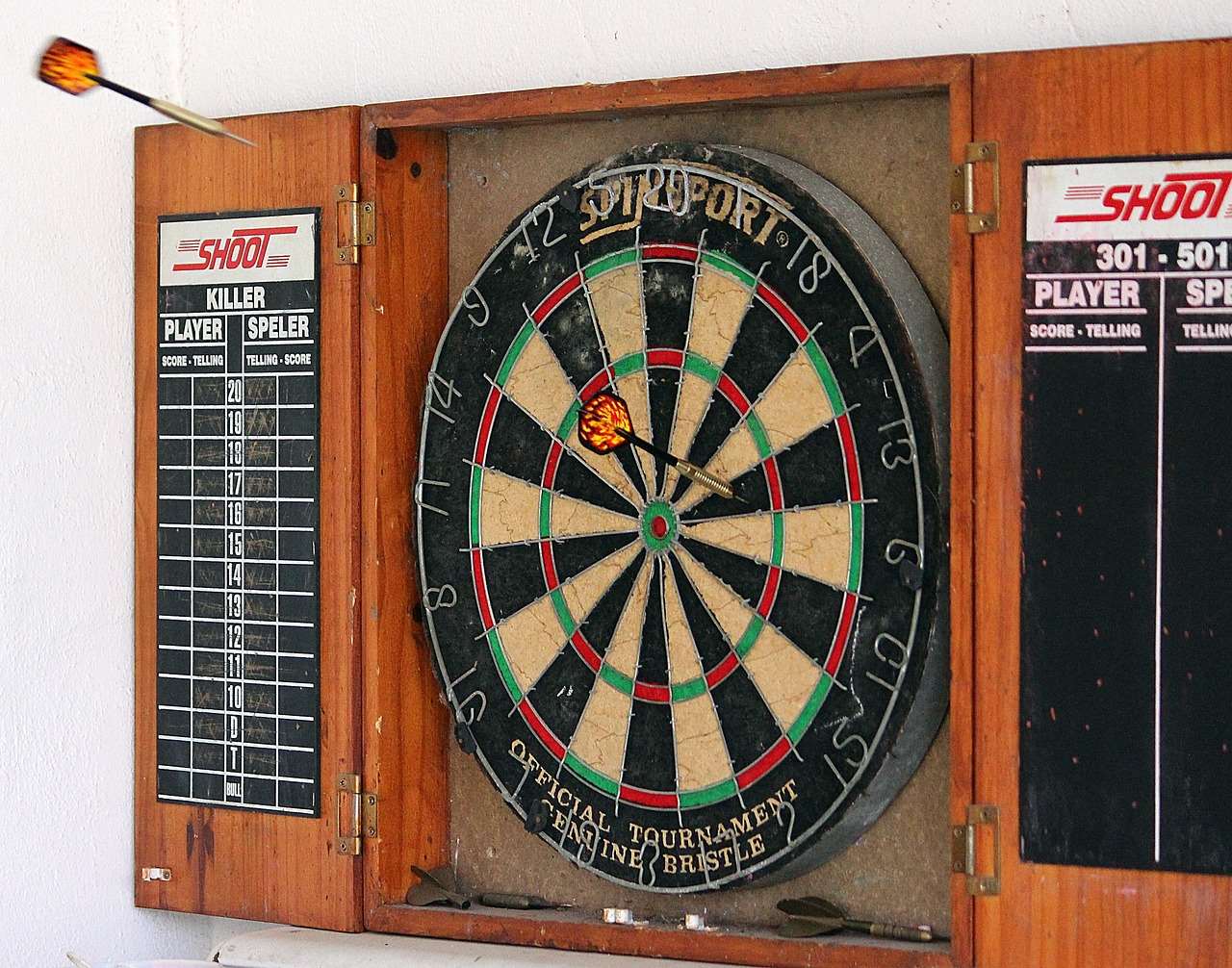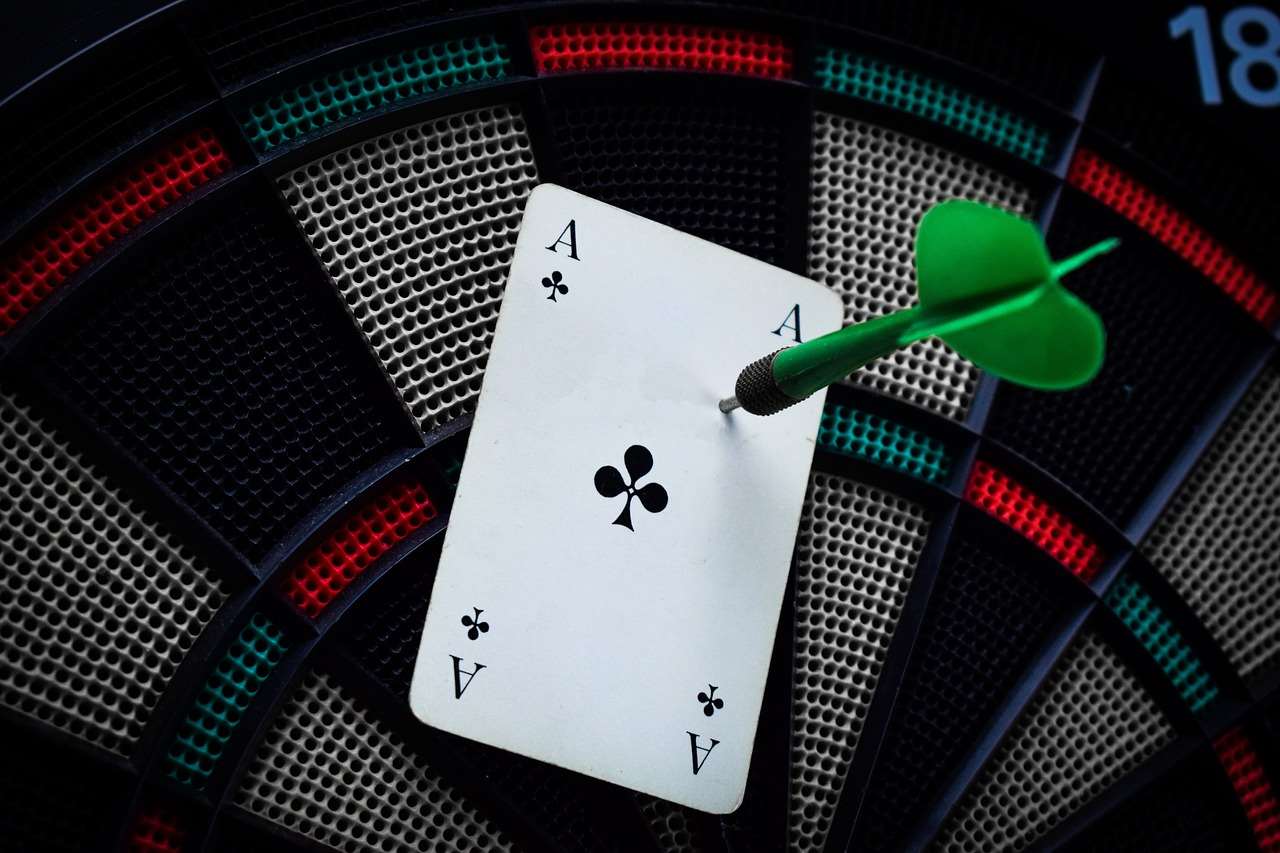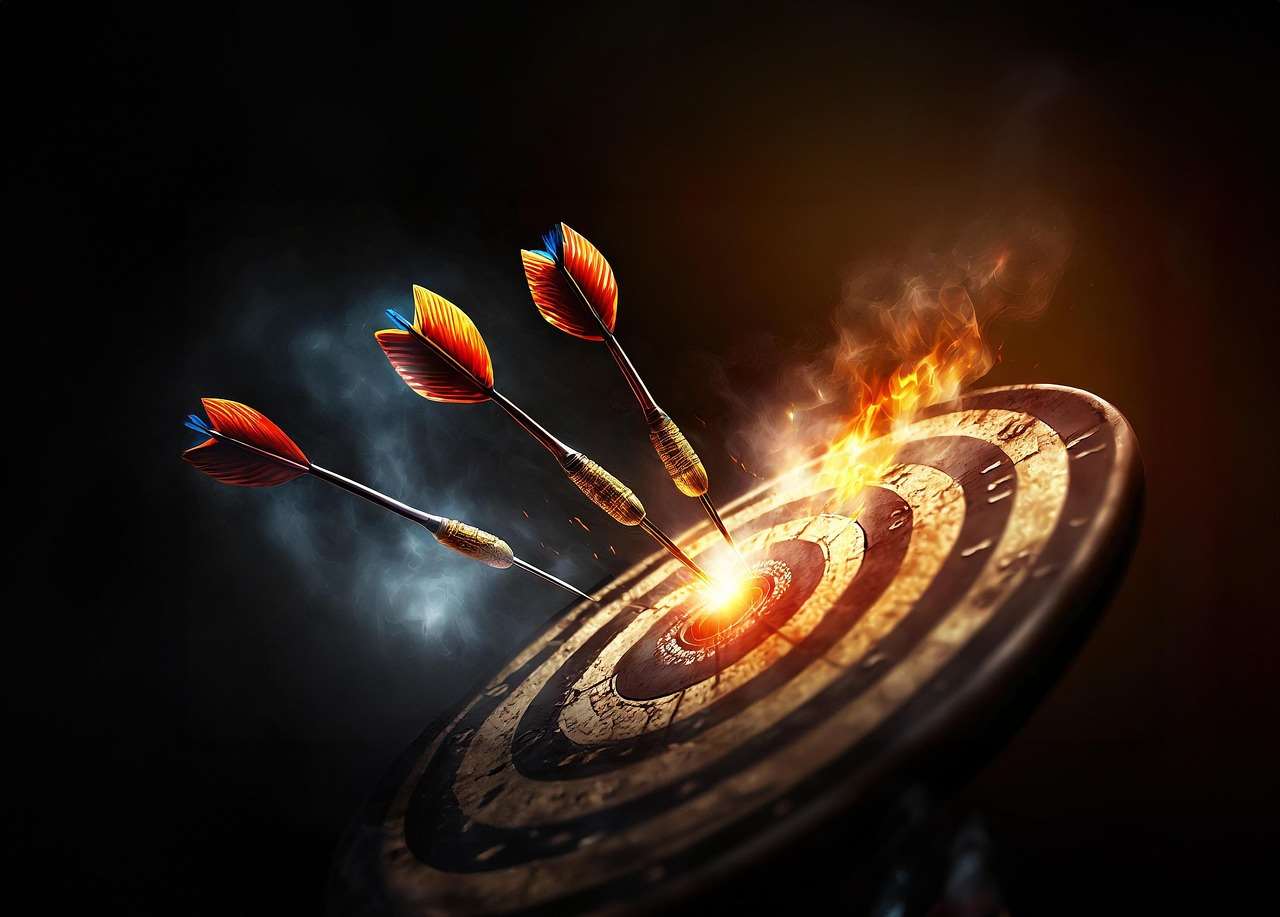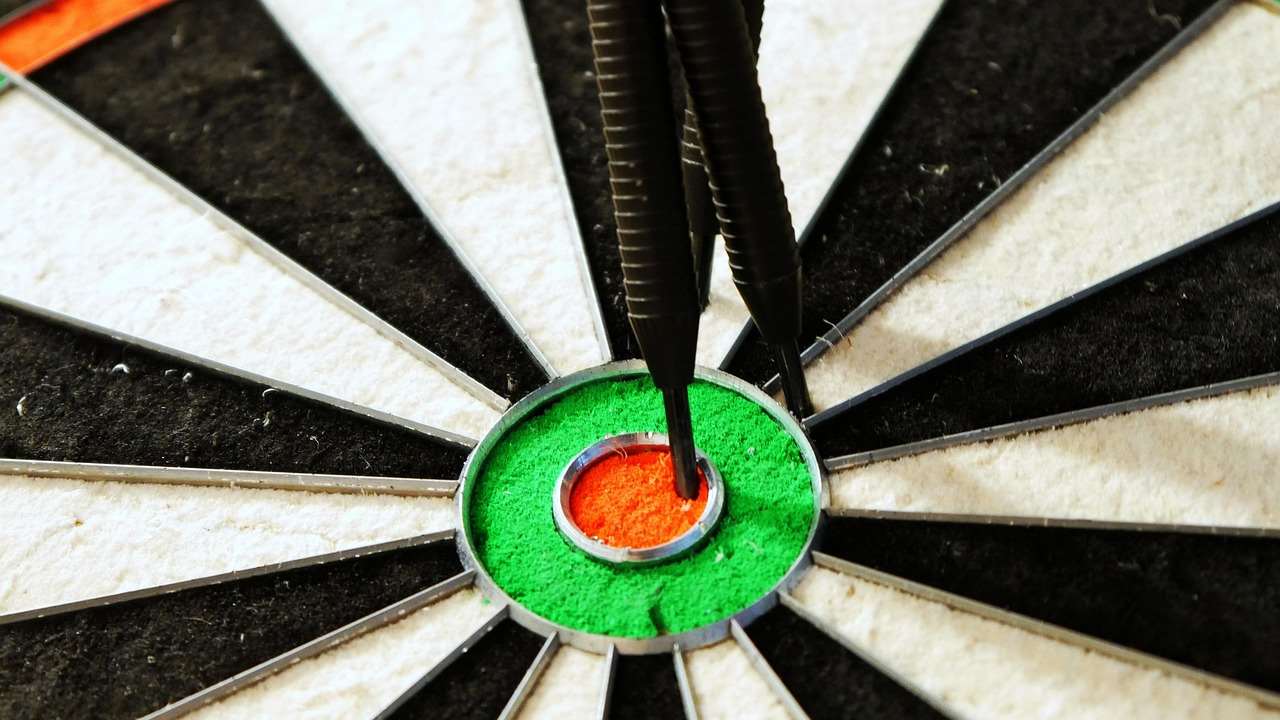Finding the right dart shaft length is crucial for consistent dart throws; generally, shorter shafts promote a straighter flight while longer shafts can help correct a tendency to throw with the dart angled down. This Dart Shaft Length Guide will walk you through selecting the ideal shaft length based on your throwing style, dart setup, and personal preferences, covering everything from understanding the impact of shaft length on dart flight to choosing the right materials and thread types.
⚠️ Still Using Pen & Paper (or a Chalkboard)?! ⚠️
Step into the future! The Dart Counter App handles all the scoring, suggests checkouts, and tracks your stats automatically. It's easier than you think!
Try the Smart Dart Counter App FREE!Ready for an upgrade? Click above!
Understanding the Impact of Dart Shaft Length
The length of your dart shaft dramatically influences the dart’s trajectory and stability in flight. It affects the center of gravity, aerodynamic properties, and overall feel. Therefore, understanding this impact is essential for fine-tuning your dart setup and improving your game. Experimentation is key, but knowing the basics gives you a starting point.
- Shorter Shafts: These tend to promote a quicker, straighter flight, often preferred by players with a clean, consistent release. They reduce the overall length of the dart, potentially minimizing wobble.
- Medium Shafts: A popular all-around choice, medium shafts offer a balance between stability and control, working well for a wide range of throwing styles. Many players start with this length and adjust from there.
- Longer Shafts: Longer shafts increase the dart’s surface area, providing more stability and potentially correcting a tendency to throw with the dart pointed downwards. They can also slow the dart down slightly.
Consider your current setup. What flights are you using? Are you consistently getting the results you want? If not, experimenting with different dart shaft lengths might be the answer.

Choosing the Right Dart Shaft Length: A Step-by-Step Approach
Selecting the perfect dart shaft length isn’t an exact science, but following a structured approach can significantly improve your chances of finding the ideal fit. Here’s a step-by-step guide:
1. Assess Your Throwing Style
Start by honestly evaluating your throwing motion. Do you have a clean, smooth release, or do you tend to wobble the dart? Do you throw with the dart angled upwards or downwards? Analyzing these tendencies will point you in the right direction.
- Clean Release: If you have a consistent and controlled release, a shorter or medium shaft might be best.
- Wobbly Release: A longer shaft could provide more stability and correct the wobble.
- Downward Angle: Longer shafts can help lift the dart, compensating for the downward angle.
2. Consider Your Dart Setup
The weight and shape of your dart barrel also play a crucial role. A heavier barrel might benefit from a longer shaft for balance, while a lighter barrel might pair better with a shorter shaft. You can Choose Best Dart Equipment to achieve the best game.
3. Experiment with Different Lengths
Purchase a few different shaft lengths – short, medium, and long – and spend some time throwing with each. Pay attention to how the dart feels in your hand and how it flies through the air. Keep a log of your results to track which length consistently produces the best scores.
4. Fine-Tune Your Selection
Once you’ve narrowed it down to a couple of lengths, make small adjustments. For example, if you’re torn between a medium and a long shaft, try a slightly longer medium or a slightly shorter long. These subtle tweaks can make a significant difference.
Different Types of Dart Shafts and Materials
Beyond length, the type of shaft and the material it’s made from also affect performance. Common materials include nylon, aluminum, and carbon fiber. Each has its pros and cons.
- Nylon Shafts: These are the most common and affordable. They are flexible and can withstand some impact, but they can also break more easily than other types.
- Aluminum Shafts: Aluminum shafts are more durable than nylon and provide a stiffer flight. However, they can bend or break upon impact with the board or other darts.
- Carbon Fiber Shafts: Carbon fiber shafts are the most expensive but offer the best durability and performance. They are lightweight and incredibly strong, providing a stable and consistent flight.
The thread type is also a factor. Most darts use a standard 2BA thread, but some older or specialized darts may use a different thread size. Ensure that the shaft thread matches the thread on your dart barrel to avoid damage.

Addressing Common Issues Related to Dart Shaft Length
Even with careful consideration, you might encounter issues after selecting your dart shaft length. Here are some common problems and how to address them:
- Dart Wobble: If your darts are wobbling excessively in flight, try a longer shaft or heavier flights.
- Dart Fishtailing: Fishtailing (darts curving side to side) can indicate that your shafts are too long or your flights are too small. Try shortening the shaft or increasing the flight size.
- Dart Falling Short: If your darts are consistently falling short of the target, a shorter shaft or lighter flights might help.
- Dart Bouncing Out: If darts are bouncing out, it could be caused by many things, including worn points or the angle of the dart hitting the board.
Experimenting with different combinations of shafts and flights is often necessary to find the perfect balance. Don’t be afraid to try different setups until you achieve the desired results.
Factors Affecting Dart Flight Besides Shaft Length
While **dart shaft length** is a significant factor, several other elements contribute to dart flight. Ignoring these can lead to misdiagnosis and frustration. Key elements include:
- Dart Weight: Heavier darts tend to be more stable in flight, while lighter darts require more finesse.
- Dart Barrel Shape: Different barrel shapes affect the dart’s center of gravity and aerodynamic properties.
- Flight Shape and Size: Larger flights provide more stability, while smaller flights offer more speed.
- Throwing Technique: A consistent and repeatable throwing technique is crucial for accuracy.
- Dartboard Quality and Setup: A poorly maintained or improperly mounted dartboard can negatively impact your scores.
Remember to consider the entire dart setup and your throwing technique when troubleshooting flight issues. Adjusting multiple factors in combination can often yield better results than focusing solely on shaft length.

Advanced Tips for Fine-Tuning Your Dart Setup
Once you’ve established a baseline setup, you can start experimenting with more advanced techniques to further refine your dart’s performance. This includes:
Using Shaft Rings
Shaft rings are small metal or plastic rings that fit around the base of the shaft, preventing flights from falling off during play. They also add a small amount of weight, which can subtly alter the dart’s balance.
Experimenting with Different Flight Shapes
Different flight shapes (standard, slim, kite, etc.) affect the dart’s stability and speed. Try different shapes to see which ones work best for your throwing style.
Adjusting Grip and Stance
Small changes to your grip or stance can have a significant impact on your accuracy and consistency. Experiment with different grips and stances to find what feels most comfortable and effective.
Considering Environment
The environment can even affect the flight of your dart. Air conditioning or open windows can change the air currents within a room and affect the flight path. Take these into account during practice.
The Importance of Consistent Practice
No matter how perfectly you dial in your dart setup, consistent practice is essential for improvement. Regular practice helps you develop muscle memory and refine your throwing technique.
- Set Realistic Goals: Don’t try to overhaul your game overnight. Set small, achievable goals and gradually work towards them.
- Practice Regularly: Even short practice sessions are better than no practice at all. Try to practice for at least 15-30 minutes a few times per week.
- Focus on Technique: During practice, concentrate on maintaining a consistent throwing technique. Avoid making drastic changes to your form.
- Track Your Progress: Keep a record of your scores and any changes you make to your setup. This will help you identify what works and what doesn’t.

Dart Shaft Length and Player Height: Is There a Correlation?
While there’s no definitive scientific evidence directly linking player height to ideal dart shaft length, anecdotal observations suggest a possible correlation. Taller players may sometimes find longer shafts more comfortable, allowing for a more natural throwing motion. Conversely, shorter players might prefer shorter shafts for better control.
However, it’s crucial to emphasize that this is not a strict rule. Individual throwing styles and preferences are far more influential than height alone. A taller player with a compact throwing motion might still prefer a shorter shaft, while a shorter player with a sweeping arm motion could benefit from a longer shaft. Ultimately, experimentation and personal comfort should guide your decision, not your height.

Maintaining Your Dart Shafts
Proper maintenance of your dart shafts is crucial for ensuring their longevity and consistent performance. Regularly inspect your shafts for damage, such as cracks, bends, or stripped threads. Replace any damaged shafts immediately to prevent further issues. Cleaning your shafts periodically will also help maintain their grip and appearance. Use a soft cloth and mild detergent to remove dirt and grime. Avoid using harsh chemicals or abrasive cleaners, as these can damage the shaft material.
Dart Shaft Length Guide: Conclusion
Choosing the right dart shaft length is a personal journey that depends on your throwing style, dart setup, and preferences. This Dart Shaft Length Guide has provided you with a comprehensive overview of the factors to consider, from understanding the impact of shaft length on dart flight to selecting the right materials and thread types. Remember to experiment, track your results, and fine-tune your setup until you find the perfect fit. Consistent practice and proper maintenance will help you maximize your potential and enjoy the game of darts to its fullest. If you are looking to improve your game consider reading How To Light Your Dartboard.
Take the information provided in this Dart Shaft Length Guide and experiment with different shaft lengths and types. Visit your local darts supplier, or order online, a variety of shafts and see which one works best for you. Don’t be afraid to try something new!
Hi, I’m Dieter, and I created Dartcounter (Dartcounterapp.com). My motivation wasn’t being a darts expert – quite the opposite! When I first started playing, I loved the game but found keeping accurate scores and tracking stats difficult and distracting.
I figured I couldn’t be the only one struggling with this. So, I decided to build a solution: an easy-to-use application that everyone, no matter their experience level, could use to manage scoring effortlessly.
My goal for Dartcounter was simple: let the app handle the numbers – the scoring, the averages, the stats, even checkout suggestions – so players could focus purely on their throw and enjoying the game. It began as a way to solve my own beginner’s problem, and I’m thrilled it has grown into a helpful tool for the wider darts community.